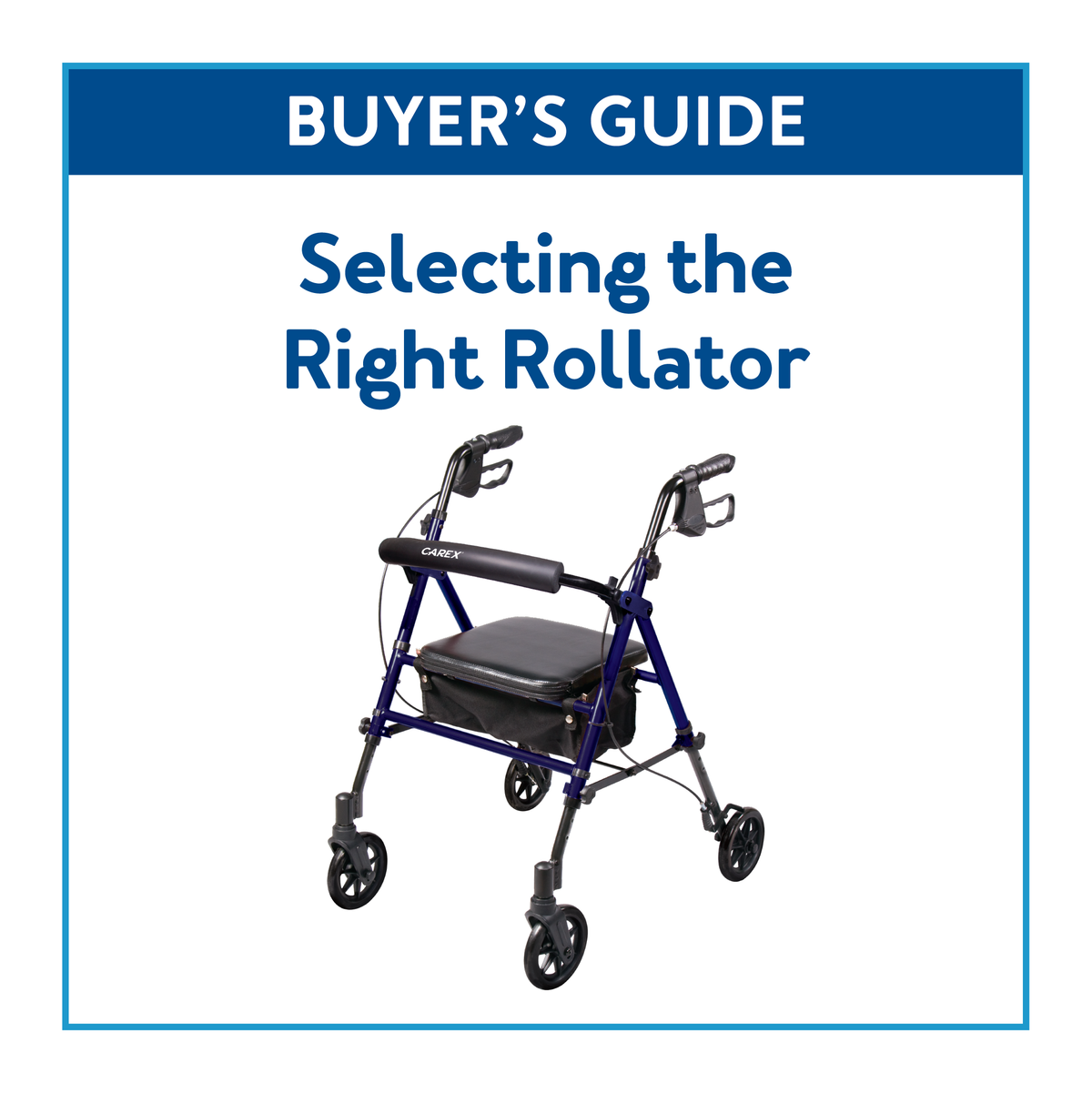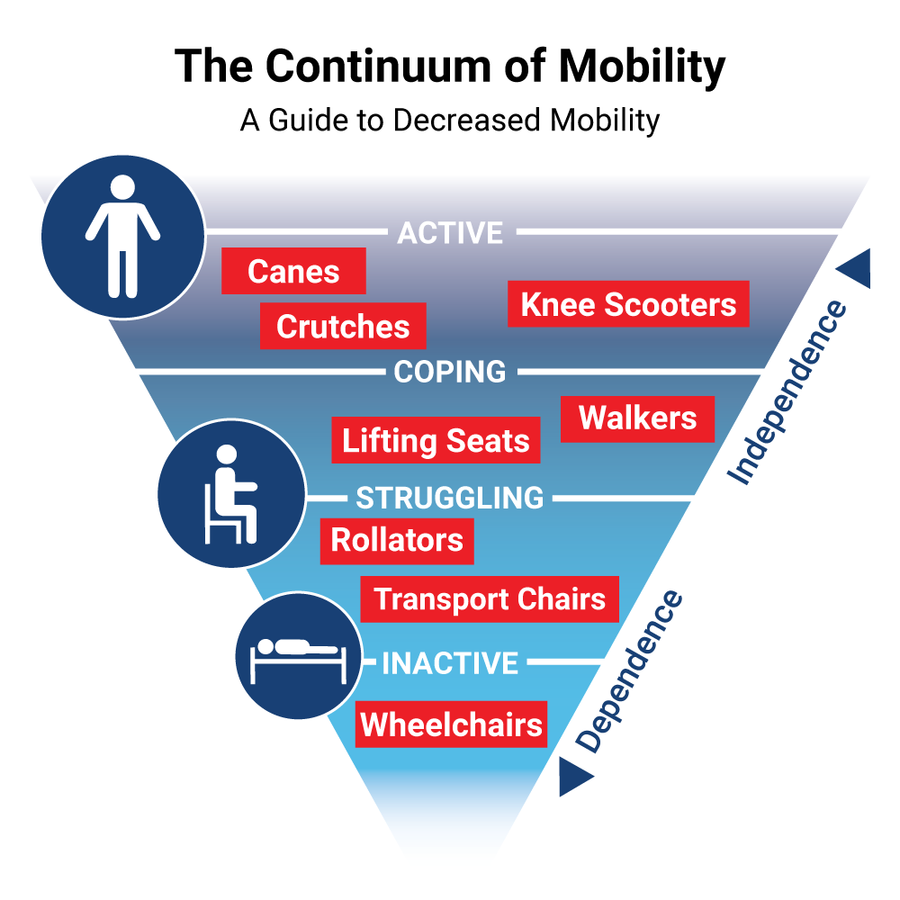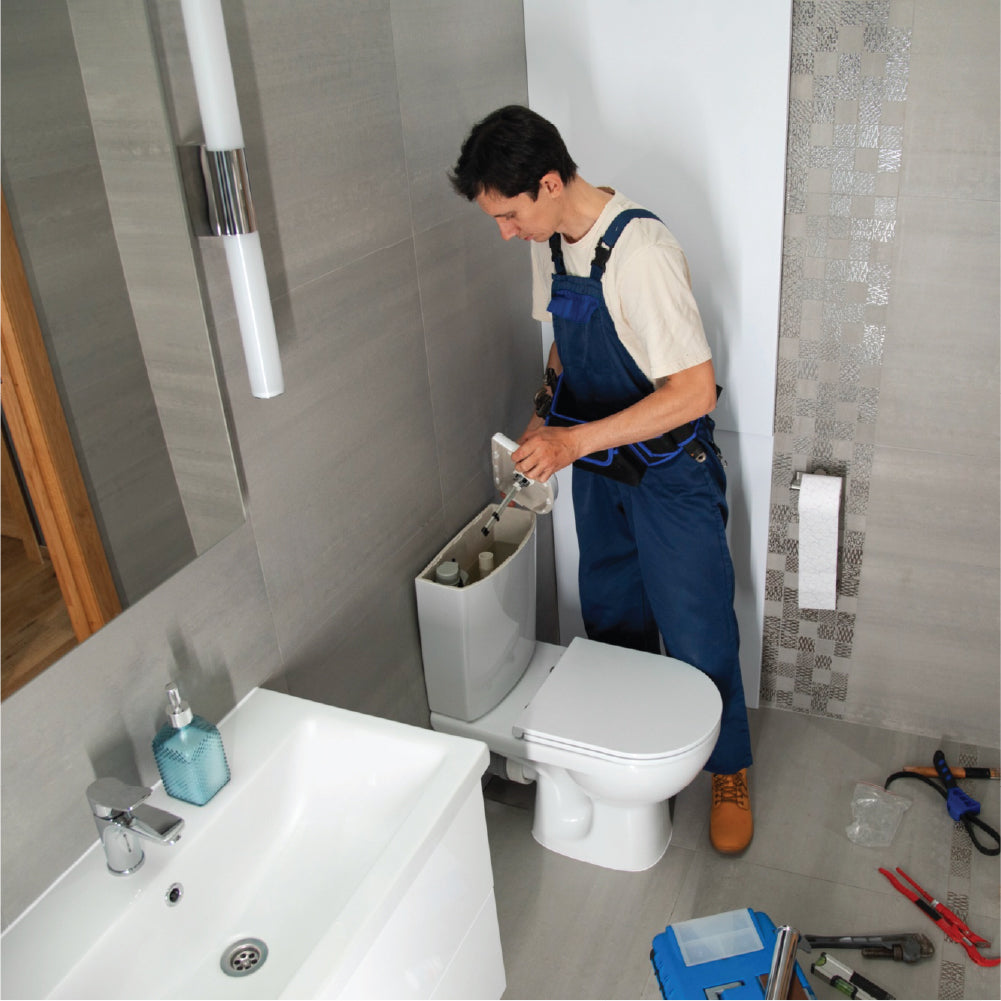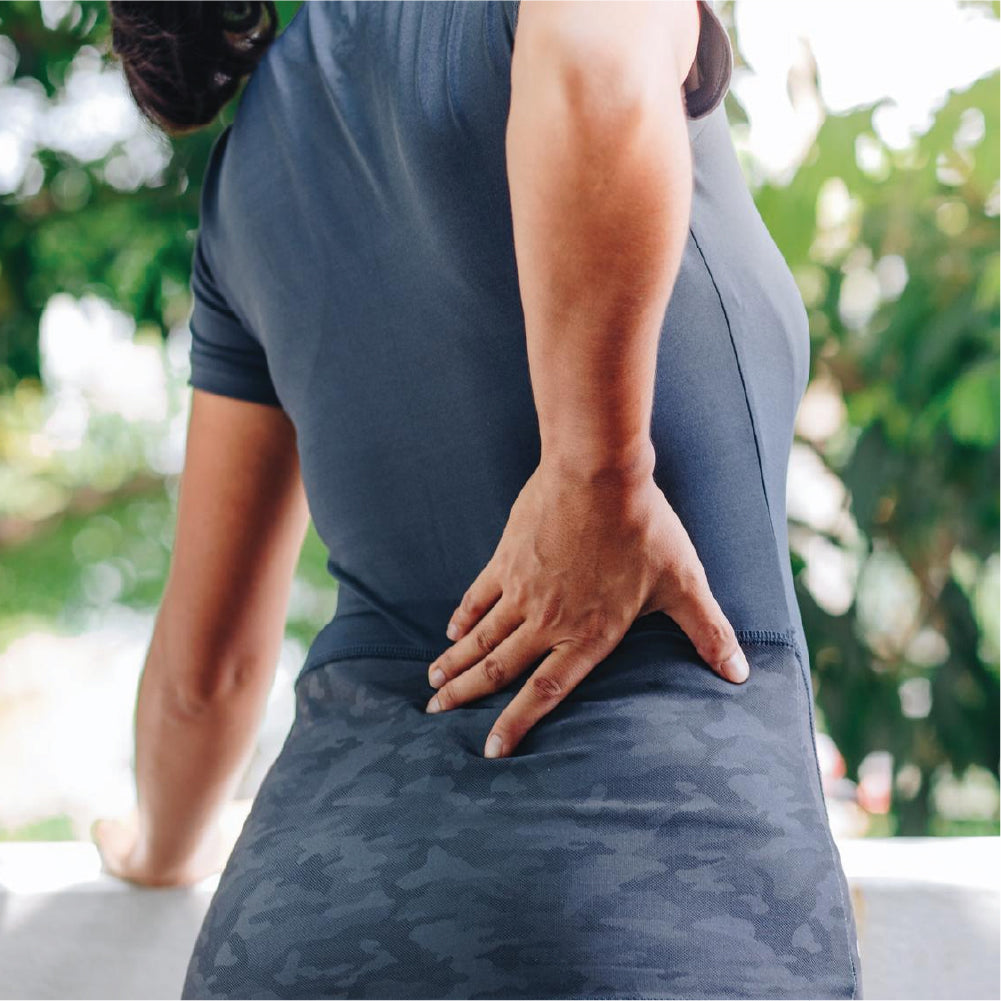Buyer's Guide: Selecting the Right Rollator
Everything you need to know to choose the right rollator.
Whether it's moving around the house or going to the store, mobility proves to be an essential aspect of leading a happy, healthy life. To have some level of independence, one must be able to move around without the support of another being. This is where mobility aids such as walkers come into place. If you or a loved one are having difficulties staying mobile and active, you may be considering a walker. This guide will "walk" you through the essentials of walkers, including what they are, things to consider, and more.

What is a Walker?
A medical walker is a mobility aid used for assistance with walking, balancing, and resting. It's most commonly used by individuals who can still walk, don't need a wheelchair, but still need assistance. Walkers to help you walk, sometimes featuring wheels, are a three-sided device that features four legs connected via a sturdy frame with handles.
Who Should Use a Walker?
On the continuum of mobility (a tool used to determine one's mobility level), walkers sit at the "coping" level. At this level, users still have independence but need minor support. Walkers can offer support, balance, and stability for those at risk of falling and need more substantial help than a walking cane. A walker may be ideal if you:
- Are at risk of falling
- Have mild to moderate stability and balance difficulties
- Are in post-surgery recovery and require support on both sides of your body
- Tire quickly while walking
- Still have some level of independence and need minor support
Walkers are used to enhancing the user's independence and stability while walking or standing. They aid in increasing their ability to walk longer distances and relieve any pain or discomfort experienced while walking or standing.
Walkers are excellent tools for keeping one's independence. However, much like any other mobility aid, they have both pros and cons. Below, we've highlighted the many negatives and benefits of walkers to help guide you in your decision.
| Pros | Cons |
|---|---|
| - Lightweight
- It can easily be pushed (ideal for those with weak strength) - Supports both sides of the body - It can be used for walking/standing for extended periods - Requires less stability compared to rollators | - It can be bulky to push around (may not fit in tight spaces)
- Not made for multiple terrains - Requires the use of both hands and feet - Requires some level of stability - It cannot be used as a sitting device |
Walker vs. Rollator
Both walkers and rollators offer support for walking, standing, and resting. However, they both differ in a few areas. Walkers are a more stripped-down version of rollators. If they have wheels, they're only in the front, while rollators have wheels on both the front and back. Rollators often have more features, including a seat, basket, and handbrakes. They also tend to weigh more, with an average weight of 15 to 20 lbs. Walkers, alternatively, weigh an average of 10 lbs.
Do You Need a Walker or a Rollator?
Selecting a rollator or walker is typically up to the user's preference. Walkers require less effort to lean on, while rollators may need a better balance because of their wheels. On the other hand, rollators may be a better fit if you have difficulty lifting since they can be pushed. Walkers can require being lifted while in use.
Another factor to consider is where the mobility aid will be used. Rollators are typically a better choice for outdoor use and travel since their wheels are made for multiple terrains. Walkers usually are only made for indoor use on smooth terrains.
Rollators also often have a seat and storage, which can be beneficial for the avid traveler. These features make them much more convenient for someone who tires easily yet wants to stay active. However, walkers can often be equipped with storage accessories.

Things to Consider Before Purchasing a Walker
There are many different kinds of walkers, which can make the decision process difficult. In this section, we break down what to look for in a walker before purchasing.

Folding
If space and storage is a critical factor in your decision, you'll want a folding walker. Foldable walkers offer a convenient storage method as they can be placed in confined spaces such as closets and the trunks of vehicles. If you'll be traveling with your walker often, then this is a must-have feature. Small space walkers can enhance the traveling experience.

Wheels or no Wheels?
Added wheels can make pushing the walker much easier, especially when combined with glides. Walkers without wheels require lifting, which may not be ideal for those with weak upper body strength. However, if balance is a more significant issue, a walker without wheels may offer more stability and support.

Width
A walker will be pointless if it is too wide for your home. Before purchasing a walker, it's essential to measure the width of your home's hallways, doors, and any other space you visit frequently. The ideal walker will be used throughout your home and in any different location you spend time in. There is no standard width of walkers, so be sure to check before purchasing. If your living space is small, a narrow walker may be required.

Weight
The average walker weight is below 10 lbs, making them ideal for those with weak strength. However, your walker weight should be taken into consideration. Walkers without wheels do require being lifted to move around, which can strain those with upper body impairments. Walkers will also need to be raised to be stored in vehicle trunks. So, this is something to be aware of.

Materials
Walkers typically utilize the lightweight and durable nature of aluminum. This makes them ideal to be picked up, stored, and for long-term use. Lightweight aluminium walkers usually use rubber for their handles and tips for efficient traction and grip. If your walker will be used daily, it's essential to select one made of long-lasting materials that can withstand wear and tear. Customer reviews can help guide you if the walker you're considering will last.

Weight Capacity
Having ample weight capacity is vital to any mobility aid. Most walkers feature a 300 lbs weight capacity. However, bariatric walkers usually support up to 400 lbs. If you're considered bariatric, make sure you select a walker that can support your weight. Failure to do so can result in injury.

Height
Most walkers have an adjustable height. However, it's crucial to have the correct height to make proper use of your walker. Having a walker that's too low or too high can further inhibit one's mobility and put them at risk of injury. The proper height for your walker will give your elbow a slight bend at roughly 15 degrees.

Replacement Parts
Having replacement parts readily available is often overlooked when selecting a walker. This can be even more important if the walker is being used every day for a more extended period. Ensure to check with the manufacturer to see if they offer replacement parts, especially walker tips and handles. Those usually wear more heavily as they're in contact with the ground and the user's hands.

Hand Grips
You'll want a walker that offers not just ample support but a comfortable grip. Walkers with rubber handgrips add a layer of comfort for everyday use. The improper handgrip can add strain to the hands and make regular use uncomfortable.

Accessories
Walker accessories such as baskets, cane holders, trays, platform attachments, and glides can add a new level of comfort, convenience, and accessibility. Most walkers don't include any storage space, which can be inconvenient. It's essential to consider that walkers require both hands for use, which may need storage to make usage easier.
If your home has carpet, consider investing in ski gliders. These specially designed walker tips make using a walker on carpet much easier by allowing it to glide. Traditional walker tips cannot be dragged on carpet.
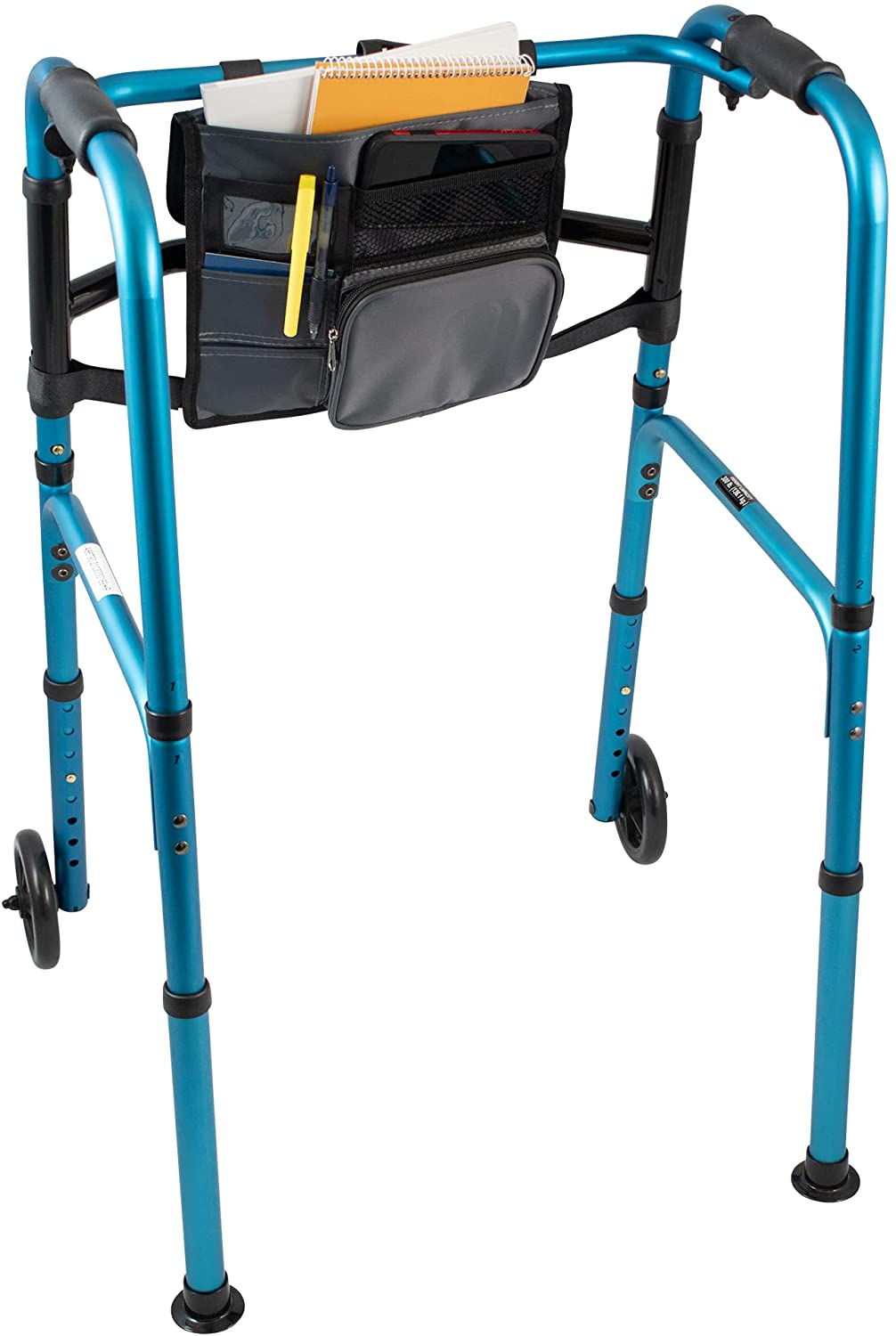


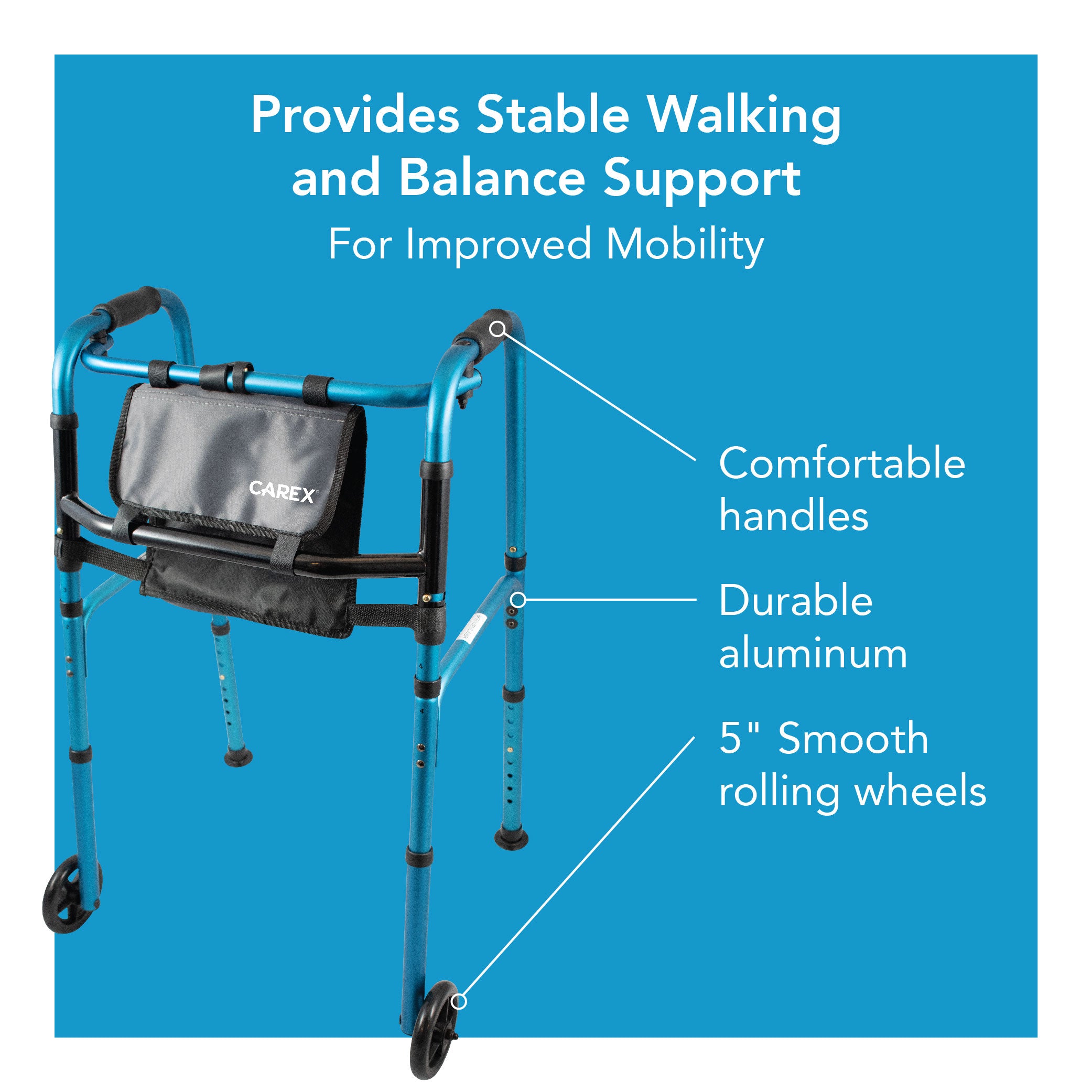
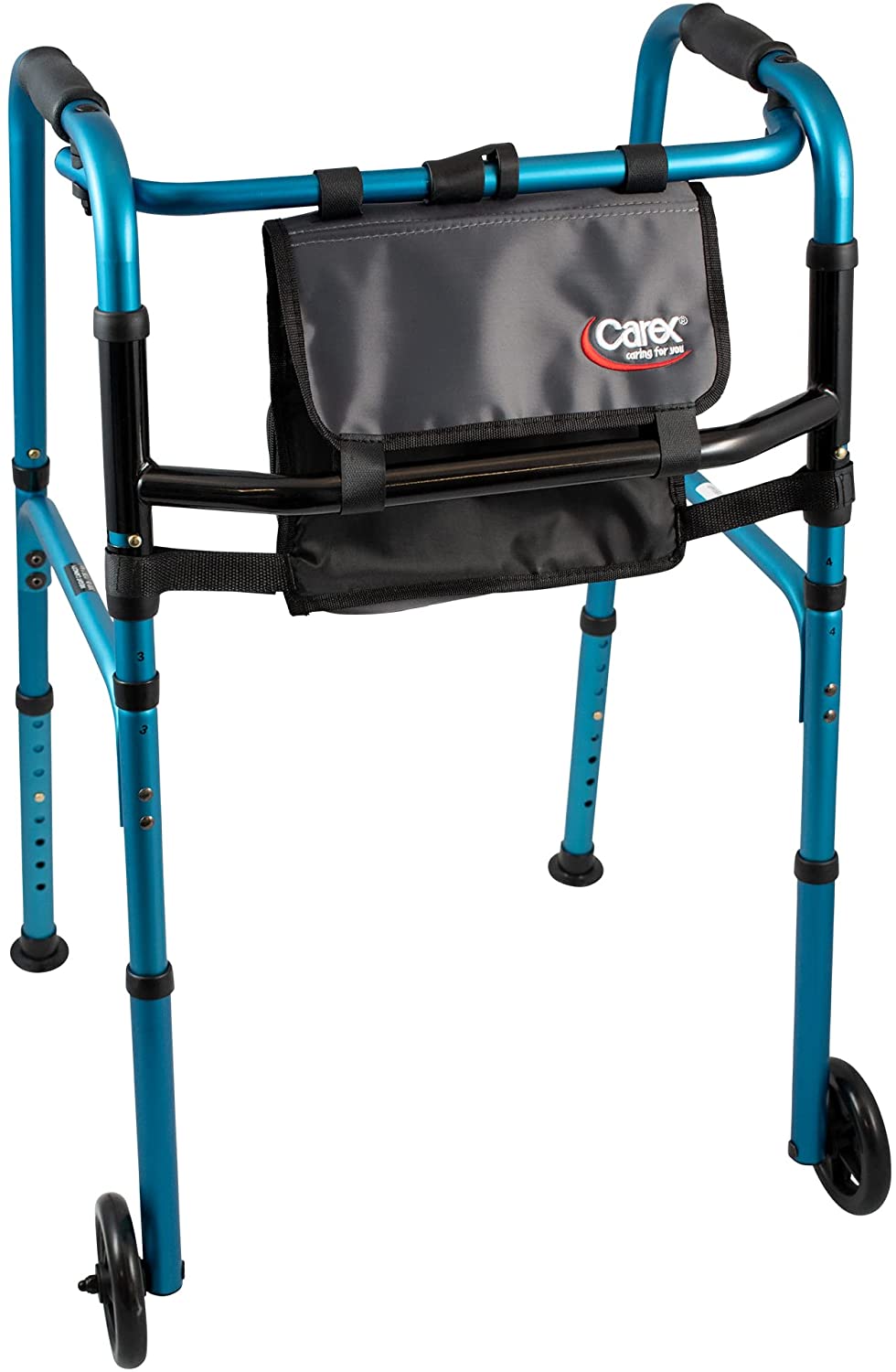

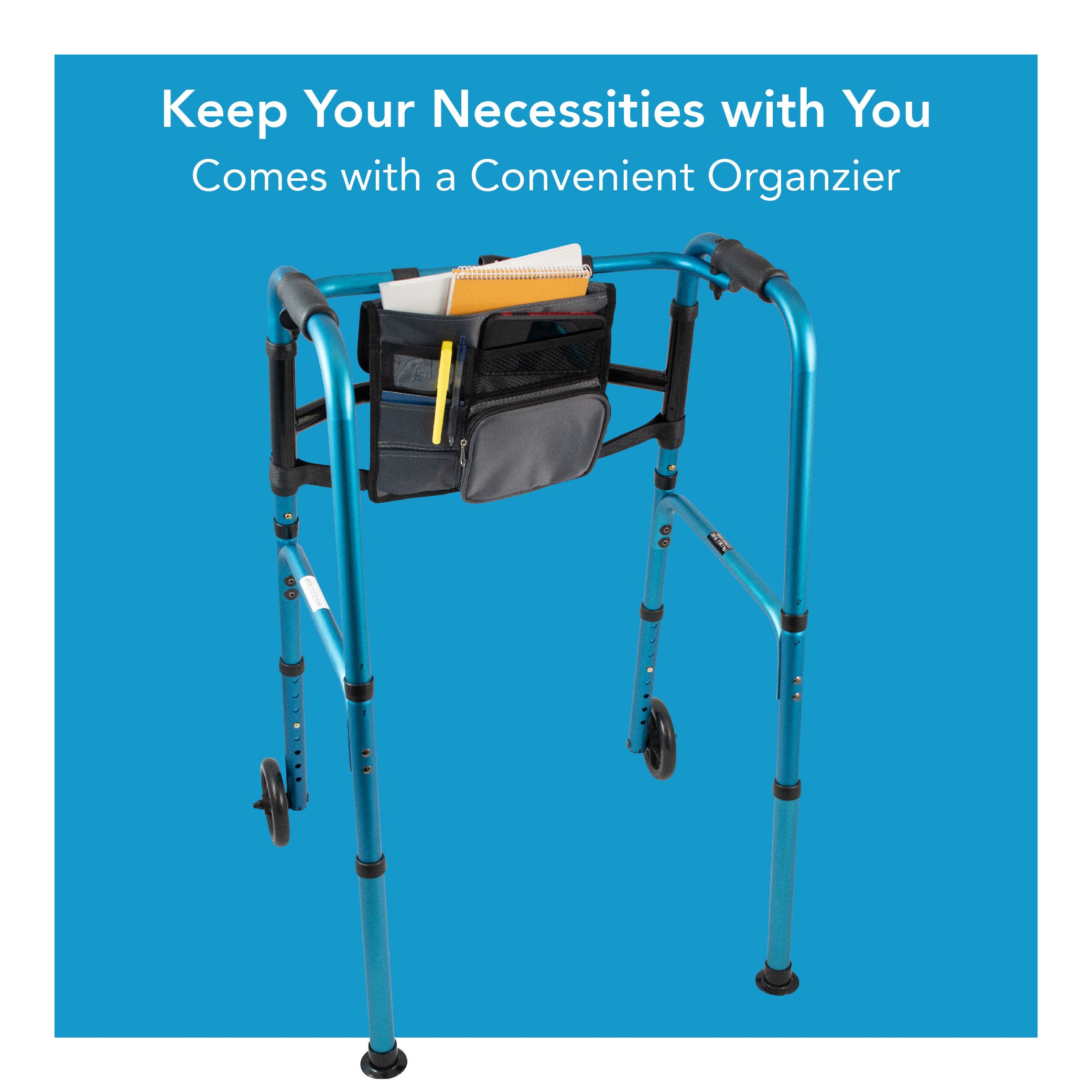

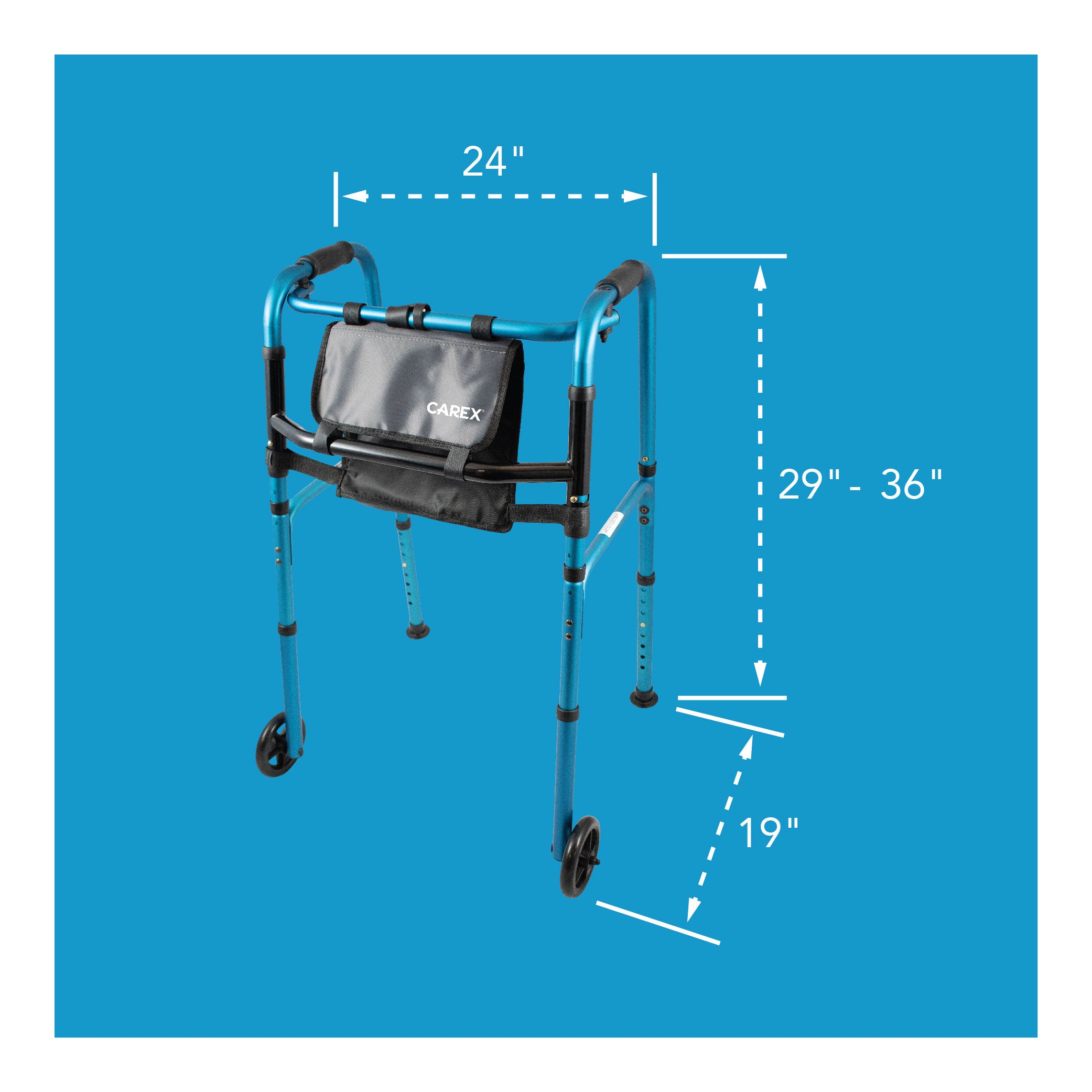
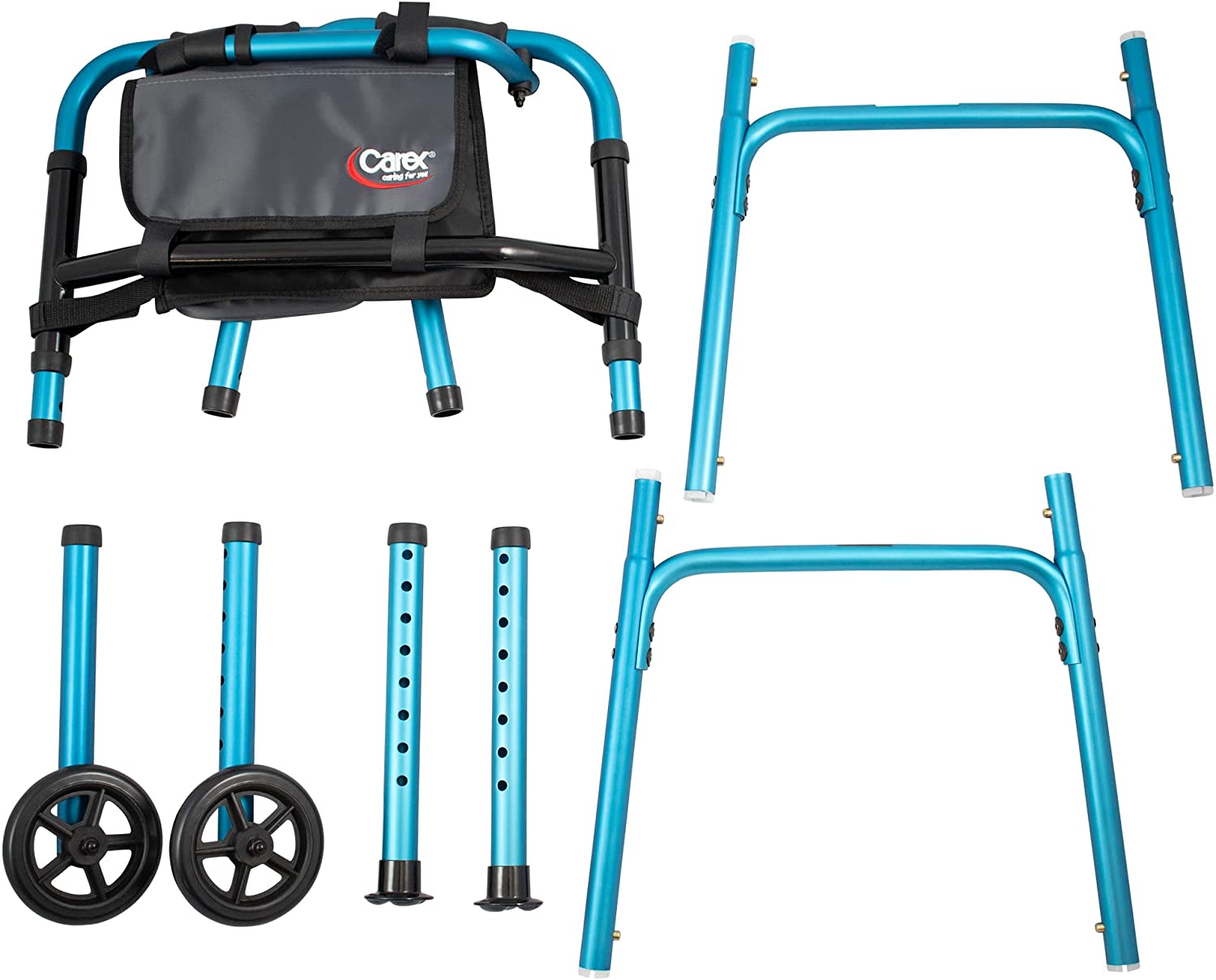
"Well-made folding travel walker"
⭐⭐⭐⭐⭐
"The build quality seems quite good, and it easily supports my full weight of 180s when I lift my feet off the floor to do parallel dip exercises. I'm disabled by sciatica secondary to lumbar spinal stenosis and need something to lean forward on to relieve the pain when I stand and walk. But I can ride a bicycle with no problem in the flexed seated position, so I carry this little beauty on the rear carrier when I go shopping or visit the doctor by bike. If there's no shopping cart to lean on when I arrive, I just unfold my walker and ambulate without pain. The glides slide really well and they are replaceable - much nicer than the tennis balls on my other walker. This product is tailor made for someone with a disability like mine who wants to maintain an active lifestyle." -Amazon Review
SHOP NOWTypes of Walkers
Standard
Standard walkers are the most basic types of walkers with four straight legs and no wheels. These types of walkers are usually height adjustable and have either rubber tips, glides, or both. If you're not looking for anything fancy, a standard walker may be ideal.
Wheeled
Wheeled walkers look precisely like standard walkers but with wheels on the front. These should not be confused with rollators (aka rolling walkers) as they only have two wheels, whereas rollators have three to four wheels. Basic walkers with wheels may be preferred over standard walkers if the user has weak strength or uses the mobility aid for long periods.
Hemi
What is a Hemi Walker Used for?
Lorem ipsum dolor sit amet, consectetur adipisicing elit, sed do eiusmod tempor incididunt ut labore et dolore magna aliqua. Ut enim ad minim veniam, quis nostrud exercitation ullamco laboris nisi ut aliquip ex ea commodo consequat. Duis aute irure dolor in reprehenderit in voluptate velit esse cillum dolore eu fugiat nulla pariatur.
Uplift
Uplift walkers have two pairs of handles and are designed to aid users in sitting and standing. They feature two levels of handles: a top-level for pushing and a bottom level for assistance with sitting or standing. These walkers are perfect for those who struggle sitting down and up. They offer the same support as standard walkers with the added benefit of sitting/standing assistance.
How to Measure for a Walker
Having the proper walker height is essential to the user's safety and health. The improper height can worsen existing conditions, create strain, and lead to injury. Use these steps to properly size a walker:
- While wearing shoes, stand straight up with your arms relaxed at the side.
- With your arms relaxed and at the side, the top of the walker should match your wrist level.
- When your hands are on the walker's handgrips, your arms should be bent at a 15-20 degree angle.

How to use a Walker Properly
Using a walker for the first time may be awkward, but over time, you'll find it gets easier and more comfortable. If you'll be using a walker for substantial support, it's essential to know how to walk with a walker on flat surfaces, up/downstairs/steps, and how to sit and stand. Please note that the proper way to walk with a walker will not put any strain on your body. If this occurs, it's best to seek medical advice.
Walking on a Flat Surface
- Place the walker in front of you.
- Place your hands on the handgrips and check that your arms are bent at a 15-20 degree angle.
- Move the walker a short distance (6" to 12") in front of you using only your upper body (keep your feet planted).
- Use the walker for weight support to take a single step forward. If you have an injured or weak leg, step forward with that side first.
- Repeat steps 3 and 4 as needed.
Walking Up Stairs
It's important to note that not everyone should be walking up or downstairs with a walker. Be sure to check with your doctor before doing so, as they may recommend alternative options based on your condition and physical levels. It may be more suitable to commission a walking cane when using stairs.
- Place yourself and your walker in front of the bottom step with yourself closest to the handrail.
- Position your walker sideways with the crossbar next to you.
- Place one hand on the handrail and the other on the center of the walker's crossbar.
- Lift the walker and position two of its legs on the next step.
- Balance your weight evenly between the handrail and walker.
- Lead with your good leg, stepping up to the next step.
- Follow up with your weaker by stepping up.
- Next, move your walker to the next step, repeating steps 4 through 7.
Walking Down Stairs
- Position yourself and your walker at the top of the stairs. Place the walker sideways and its crossbar next to you.
- Place one hand on the crossbar and the other on the handrails.
- Place the back two legs on the first step and support your weight using your suitable leg.
- Step down with your weaker leg, keeping your weight evenly balanced between the handrail and walker.
- Cautiously bring your stronger leg down.
- Move the walker down to the next step, repeating steps 3 through 5.
Using a Walker on Steps
To step up on a curb/step:
- Place yourself and your walker close to the step.
- Lift your walker up on the step.
- Slowly use your walker for support and step up with your good leg, stepping up with your weaker leg last.
To down on a curb/step:
- Move close to the edge with your walker.
- Place the walker down to the lower level.
- Slowly use your walker for support and step down with your weaker leg, stepping down with your stronger leg last.
Sitting Down
- Back yourself and your walker up to the sitting surface
- Reach your arms back with both hands before lowering your body. You may need to use one hand at a time.
- Lower yourself slowly and use both arms for support. Do not use the walker for support.
Standing Up
- Move your body to the front edge of the sitting surface
- Use both arms to push up from the sitting surface
- Place both arms on the walker, don't pull the walker
How to Use a Walker with Wheels
The proper use of a walker with wheels does not vary much compared to using one without. Instead of picking the walker up and then taking a step, users can push the walker. If the walker does not have glides, its back legs may need to be picked up. Walker glides can make pushing easier and smoother.
When sitting down or up, it's essential to keep all four legs in contact with the floor. Do not keep your hands on the walker when sitting down, as it may tilt or fall backward. If more substantial support is needed, consider using a lifting seat. These are specially designed to aid in sitting and standing.
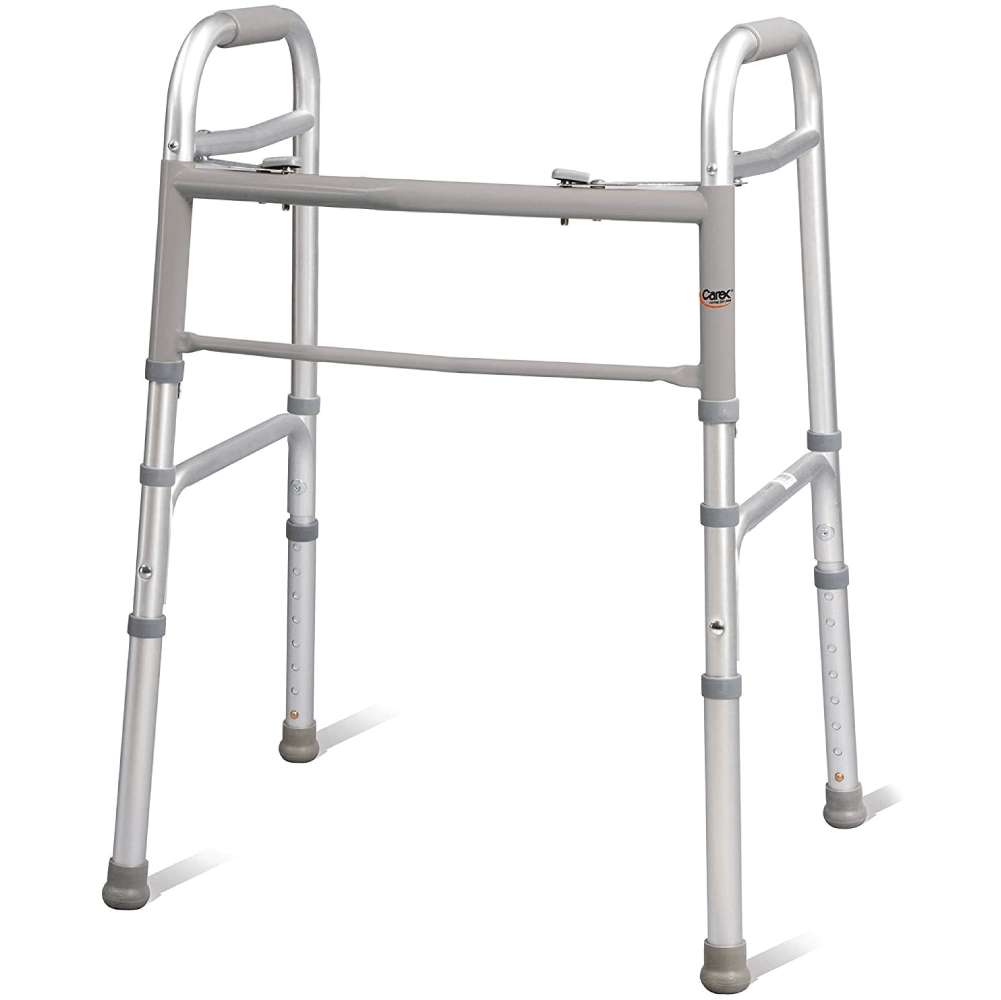

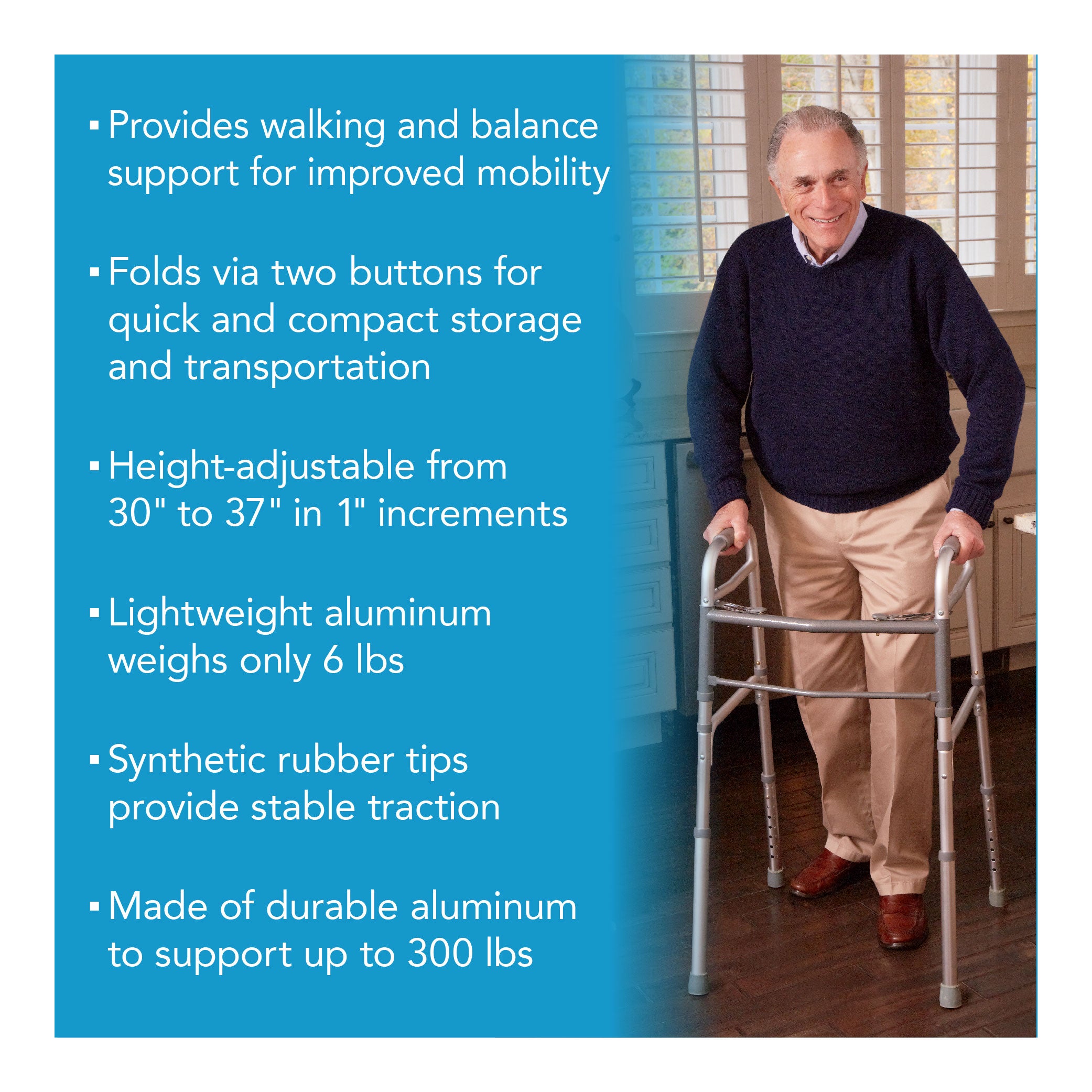
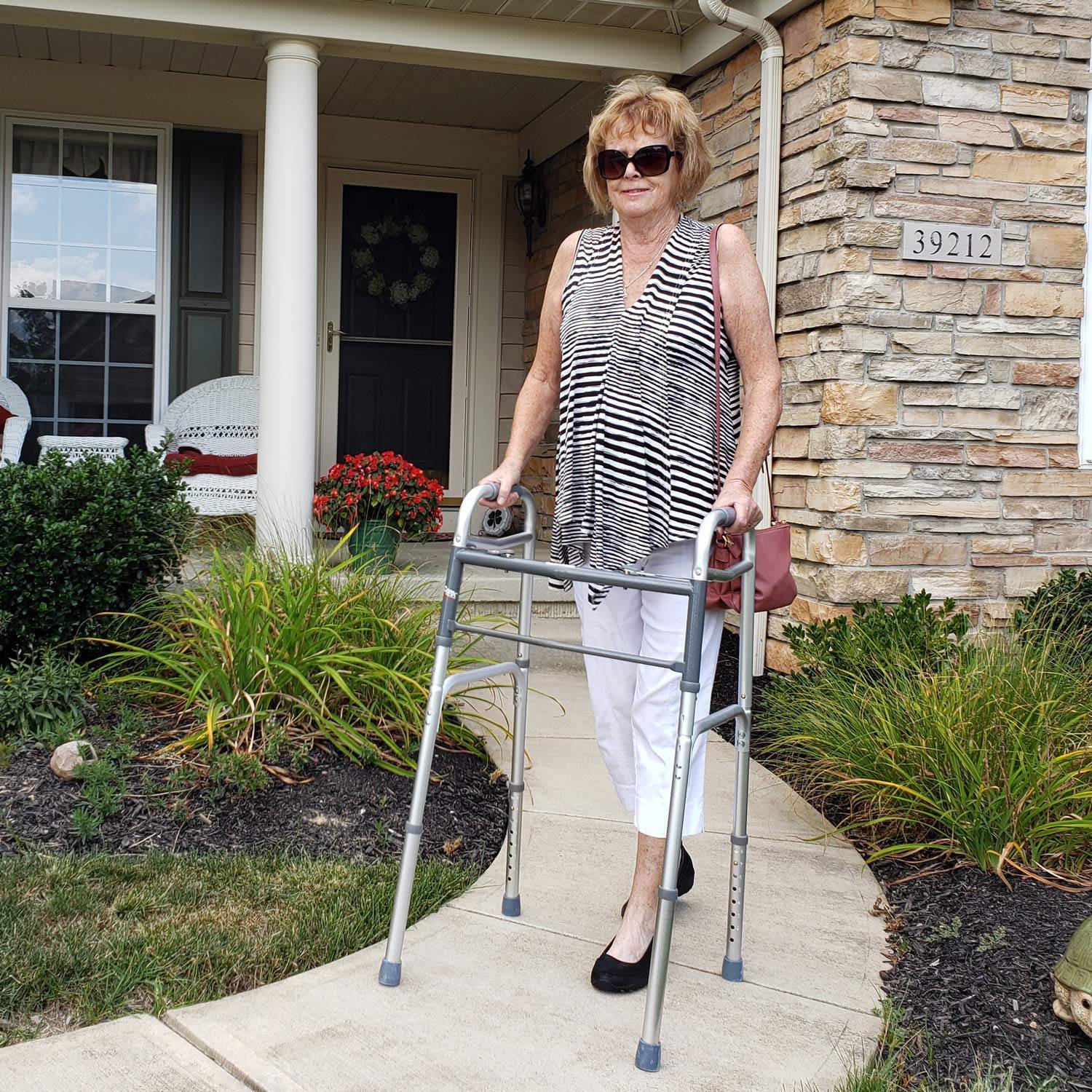
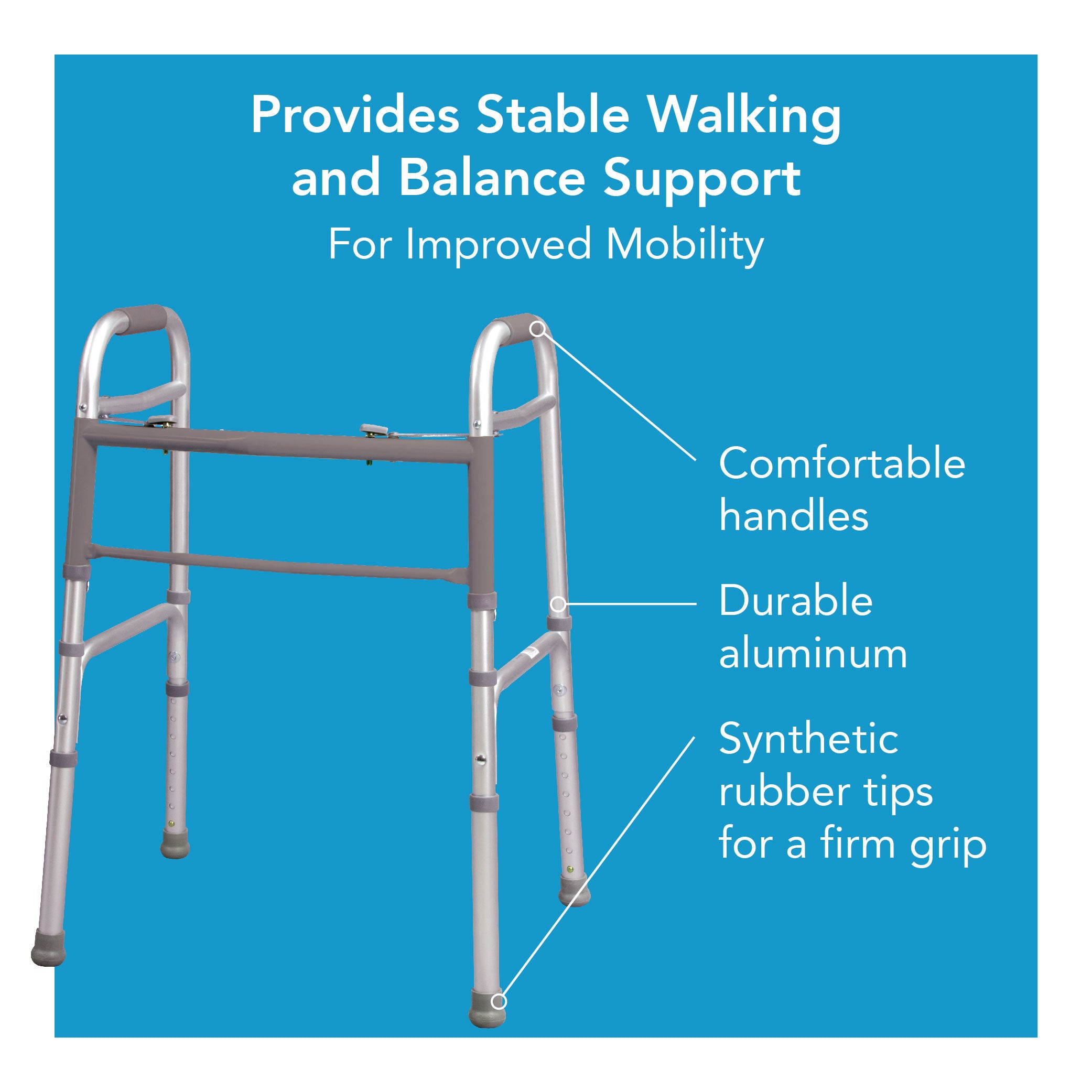

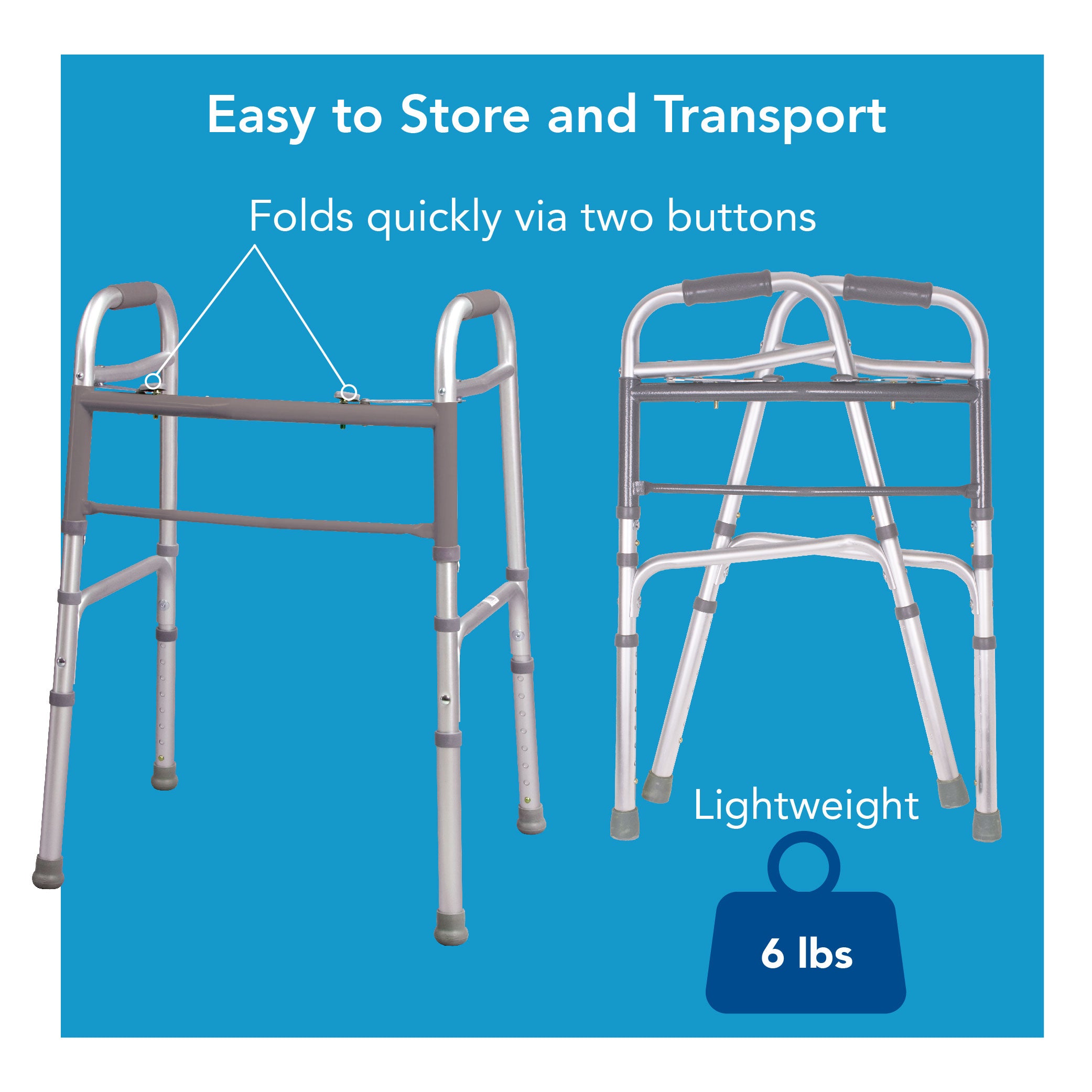

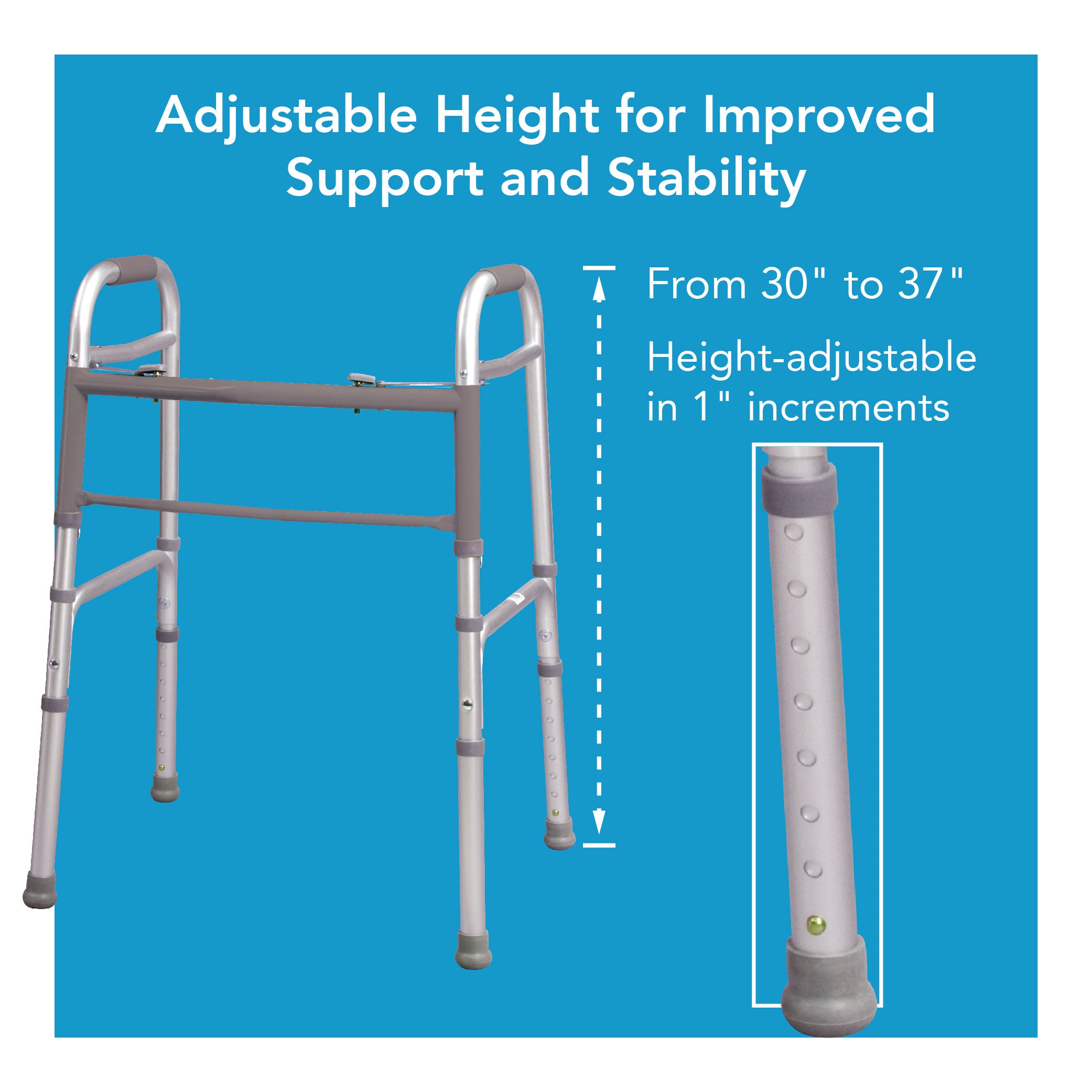
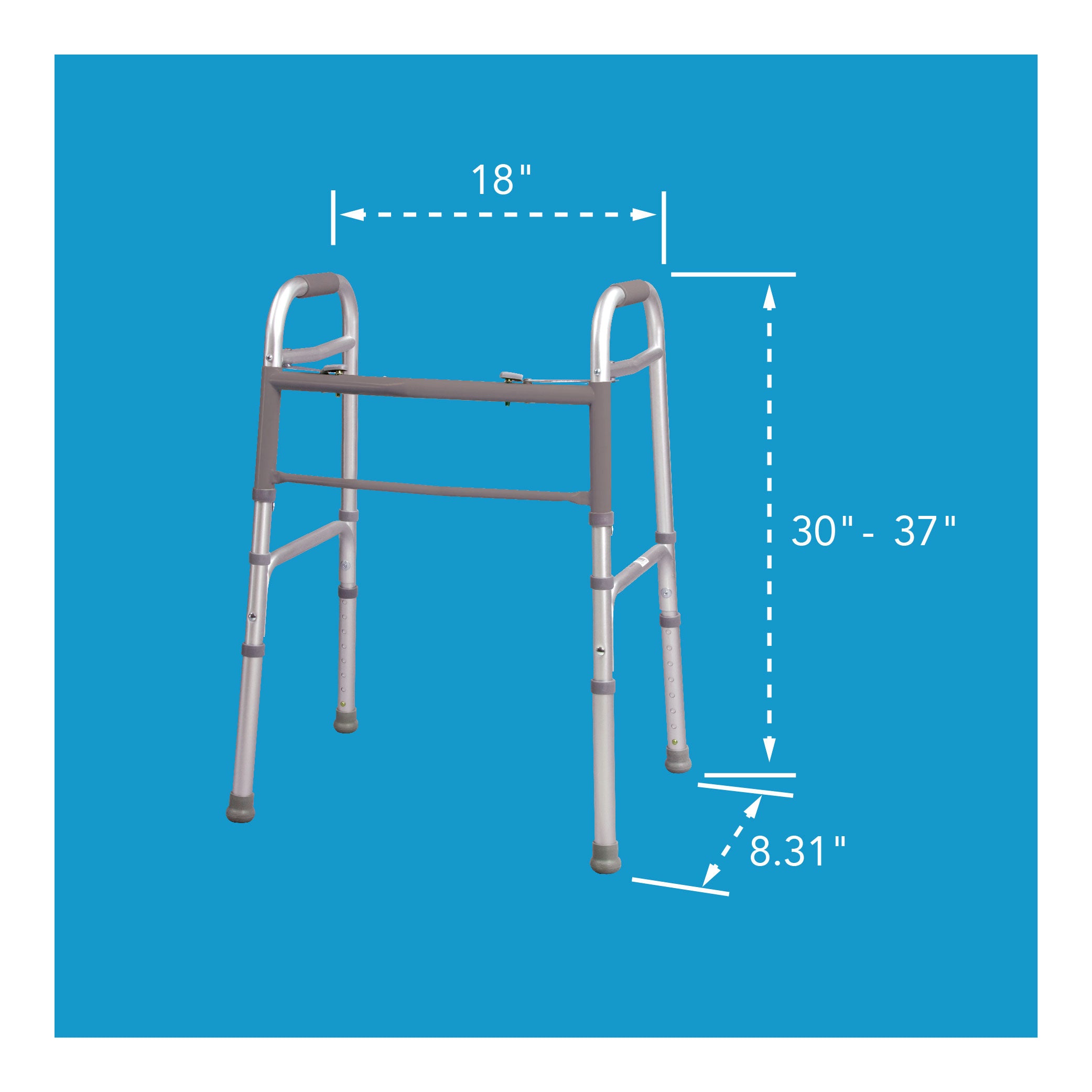
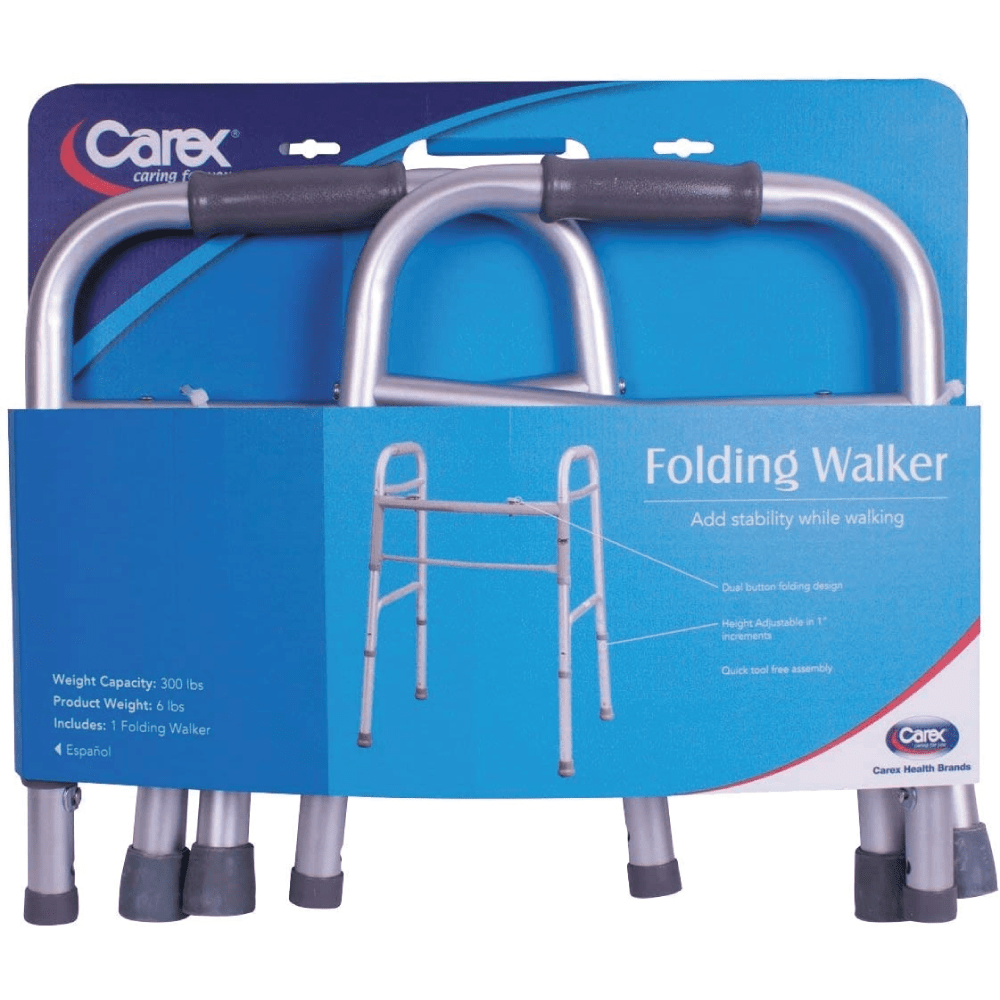
"Sturdy Walker"
⭐⭐⭐⭐⭐
"I had a total knee replacement and needed a walker to assist me for about 3 weeks. I am a 59 year old male, 230 lbs and not the most agile. This walker was easy to put together(match the letters to the letters). For 3 plus weeks, I leaned a lot of my weight on this walker and there was never a problem. I felt very comfortable regarding the walker's ability to support me as I moved about. I did not use any wheels, however, I did use plastic sleds on the back legs which made it easier to slide across all surfaces. This walker did it's job wonderfully. Excellent quality and at a good price." -Amazon Review
SHOP NOWTips to Make Using a Walker Easier

Use Accessories
When purchasing a walker, it's essential to consider your lifestyle to add the right accessories and maintain your quality of life. The right walker accessory can enhance the usability of any walker. If you have things you like to carry around, a basket or tote can make it much more manageable. If you tend to eat while on the go, a tray can give you a solid surface to eat on anywhere. A walker platform attachment can prevent you from bending over while using a walker if you're prone to back problems.

Upgrade Glides
Most walkers come with standard rubber walker tips, which require them to be picked up to be moved. A convenient and affordable upgrade to this is walker glides. Walker ski glides utilize a specialized shape that allows them to be dragged and "glide" without effort. Auto glides, on the other hand, feature a small ball that rolls when pushed. These look just like walker tips and can be pushed down to activate the brake. Both ski glides and auto glides can enhance any walker's usability and are much more attractive than traditional tennis balls.

Add Wheels
All terrain walker wheels can reduce the amount of effort required to use a walker correctly. This can significantly enhance walker safety for elderly persons who may not have the strength to continuously pick up their walker when in use.

Carry a Cane
One of the cons of using a walker is it can be bulky to carry around, especially in confined spaces. A great solution to this issue is carrying around a walking cane for additional mobility support. Walking canes are ideal for smaller areas, and specific models fold up for easy storage. They're easier to use when accessing stairs and can be used for short or long distances.

Consider a Rollator
If your mobility levels are too low for a walker, the next alternative is a rollator. Rollators are upgraded versions of standard walkers, have three to four wheels for easy pushing, and often feature a convenient seat and storage space. They're perfect for the avid traveler, acting as a seat when exhaustion sits in.

Measure Your Home Before Purchasing
Walkers come in various shapes and sizes, and so do homes. Ensure you measure the width of your hallways, doorways, and any other confined space to ensure the walker you're considering will fit. Be sure to take note of other objects such as tables and decorations. You may need to rearrange specific areas to use a walker without knocking items over.

Know Your Limitations
Understanding your limitations as well as a walker's is vital to your mobility and safety. If you struggle significantly, then a walker may not be the right choice for you. Instead, a wheelchair may be more ideal. Or, if you require minor assistance, try out a walking cane first and see how you handle it. Consult your doctor for advice. They will know your condition better and may be able to pinpoint the right mobility aid better to fit your needs.
Common Questions
Which walker is best for elderly persons?
This will vary greatly depending on the physical level, health conditions, and preferences. The right walker will:
- Have the proper height for them to comfortably stand and walk.
- Be compact enough to fit in their home and places they frequently visit.
- Be light enough for them to pick up and store.
- Have the proper accessories to make carrying items and usage more convenient.
Where to Buy a Walker?
Various types of walkers including compact walkers, folding travel walkers, and stationary walkers are widely available online and in-stores. You can find them via our walker collection, Amazon, Walmart, or at your local store.
How Much Does a Walker Cost?
An adjustable walker's price will vary based on the brand, type, materials, wheels, and more. However, walkers typically cost between $35 and can be up to $100.
Additional Mobility REsources
About the Author

Brandon Landgraf is the Digital Marketing Manager for Carex Health Brands. He finds passion and fulfillment in creating content that enhances, improves, and enlivens others' quality of life. All of his written work is formulated to not only offer essential advice and tips but back it with proven studies and experts. His mission is to connect with readers and provide steps to make their lives better.
You can connect with him on LinkedIn here.
About Carex Health Brands
Carex is your one-stop shop for home medical equipment and for products that assist caregivers with providing the best possible support and care for their loved ones. Carex Health Brands has been the branded leader in in-home, self-care medical products for over 35 years. Our goal is to improve the lives of our customers by bring them quality products that bring dignity back to their lives. With our three nationally distributed brands, Carex Health Brands serves national, regional and independent food, drug and mass retailers along with wholesalers, distributors and medical dealers.
related posts
20 Aging in Place Bathroom Design Ideas
The bathroom is the most dangerous room in any home, posing a risk for seniors who are aging in place. Utilize these 20 bathroom design ideas to make your bathroom safer, more accessible, and comfortable for seniors.
5 Bathroom Safety Products for Aging in Place
After the stairs, the most dangerous place in the home for seniors is the bathroom. Slips can often happen in a place designed for water. If you don't protect yourself adequately, it could be dangerous and potentially lethal. A bathroom is also a private place that most want to be alone in. Keeping your personal time private is essential to you. You should also make sure your life insurance is at a competitive rate. Independence, as you age, can include being able to make your own decisions, including knowing how to get an insurance quote without a checkup.We will show you some of the bathrooms' dangers for seniors and how to make it a safer place so you can retain your privacy. These five types of bathroom safety equipment can make all the difference in the world for your shower experience.
Piriformis Syndrome Injury Overview
Piriformis syndrome (Pir-i-form-is) is a condition involving the piriformis muscle, which is located deep in the glutes. This guide covers everything you should know about this condition, including what it is, causes, symptoms, tratments, and more.






